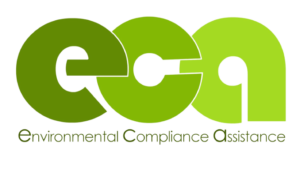FAQ
FAQ

Who needs an air pollution permit?
Facilities with equipment that may emit air pollution or is used for controlling air pollution are subject to permit requirements. The District grants two types of permits:
- Authority to Construct
- Permit to Operate
Examples of Equipment Needing Permits
- Internal combustion engines greater than 50 hp
- Boilers and steam generators
- Mixing, blending, or processing of any organic solvents, adhesives, or coatings
- Operations creating dust or smoke or involving incineration of any material
- Metal reclamation or refining of any liquids or solids
- Storage or use of solvents or motor fuels (except diesel)
- Storage or use of acids
- Operations involving chemical reactions
- Equipment handling asbestos, beryllium, hexavalent chromium, mercury, vinyl chloride, fluorides, sulfuric acid mist, and hydrogen sulfide or other sulfur compounds
More examples of Equipment Needing Permits
- Use of solvents for cleanup
- Asphalt batch plants
- Auto body shops
- Wood products coating
- Solid waste disposal
- Organic liquid storage
- Solvent cleaners (degreasers)
- Concrete batch plants
- Metal parts coating/plating
- Plastic parts coating/plating
- Sand and Gravel operations
- Oil/gas drilling
- Oil/gas production
- Cotton gins
- Gasoline stations
- Feed and grain mills
- Paint spray booths
- Dry cleaners
- Canning operations
- Check more of our services by clicking on the following link
What is New Source Review (NSR)?
New sources of air pollution and modifications of existing sources must comply with District Rule 2201 (New and Modified Source Review), also known as New Source Review or NSR. This rule is a component of Regulation II of our District Rule. The NSR rule provides the mechanism for the District to issue permits to new and expanding businesses without interfering with efforts to meet the state and federal health-based air quality standards. NSR contains a couple of main requirements – BACT and Offsets.
How does the District regulate toxic air emissions?
Toxic air emissions are regulated under the District’s Integrated Air Toxic Program. This program integrates the state and federal requirements and is aimed at protecting public health. The major goals of this program are as follows:
1) Assuring compliance with State and Federal requirements aimed at protecting public health;
2) Eliminating duplication and redundancy by consolidating requirements where multiple rules, programs, and emission limits apply to a single operation;
3) Maximizing the use of existing programs for quantifying, assessing, and controlling air toxic emissions;
4) Maximizing the use of the District’s existing ozone and PM10 regulations that also result in air toxic emissions reductions;
5) Maximizing the use of the District’s existing permitting, inspection, and emission inventory systems to minimize the burden of State and Federal recordkeeping and reporting requirements; and
6) Not Federalizing “State-only” requirements unless doing so provides a corresponding benefit by substantially streamlining the program.
What is the Air Toxic Hot Spots Act?
The Air Toxic Hot Spots Act was a law adopted by the California State Legislature in 1987. This Law required the District to compile an emissions inventory of air toxic emissions, evaluate and assess the inventory for possible health risks facilities may pose to the general public, and notify those individuals who may be exposed to health risks.
What facilities are subject to the Air Toxic Hot Spots Requirements?
A facility is subject to Air Toxic Hot Spots Requirements if it 1) emits more than ten tons per year of Total Organic Gases, Particulate Matter, Nitrogen Oxides, or Oxides of Sulfur; or 2) belongs to a source category identified in the State Emission Inventory Criteria and Guidelines Report.
What must facility operators subject to Air Toxic Hot Spots requirements do to report their emissions?
Facilities that are subject to the toxic emission inventory requirements of the Hot Spots Act must prepare and submit toxic emission inventory plans and reports, and periodically update those reports. District technical services staff in the District’s Fresno Office are available to assist in this process.


Leave a Reply
Want to join the discussion?Feel free to contribute!